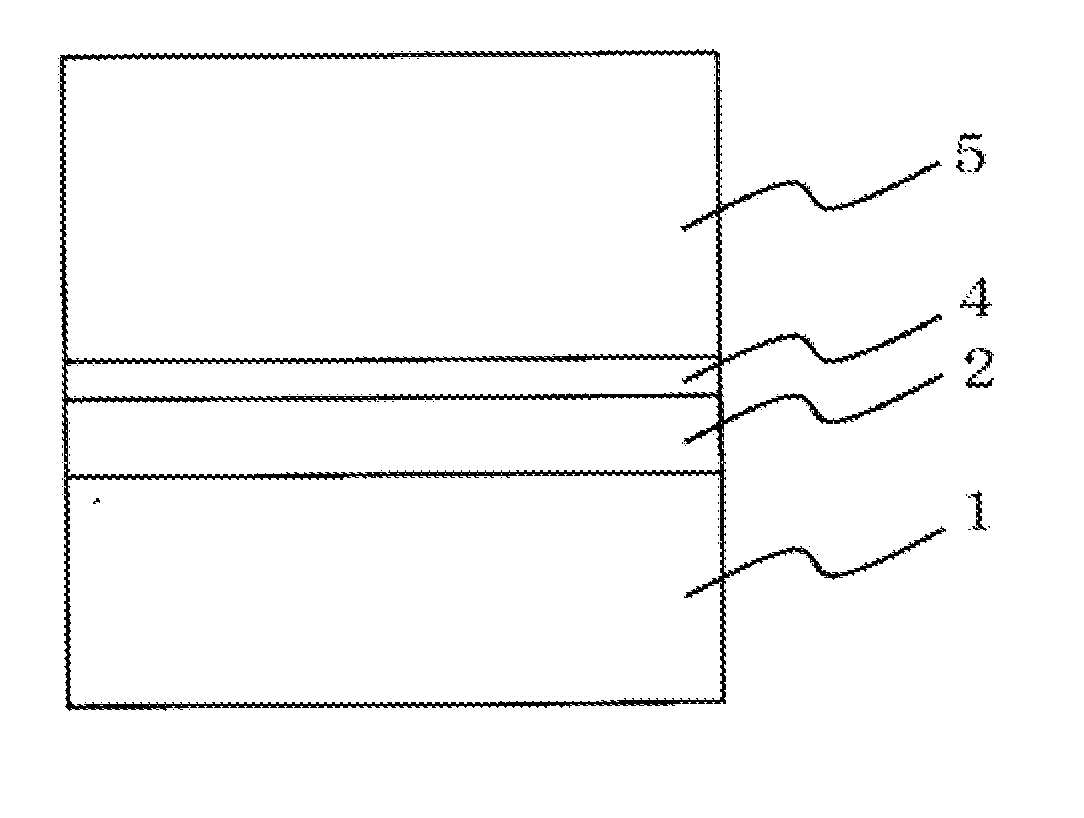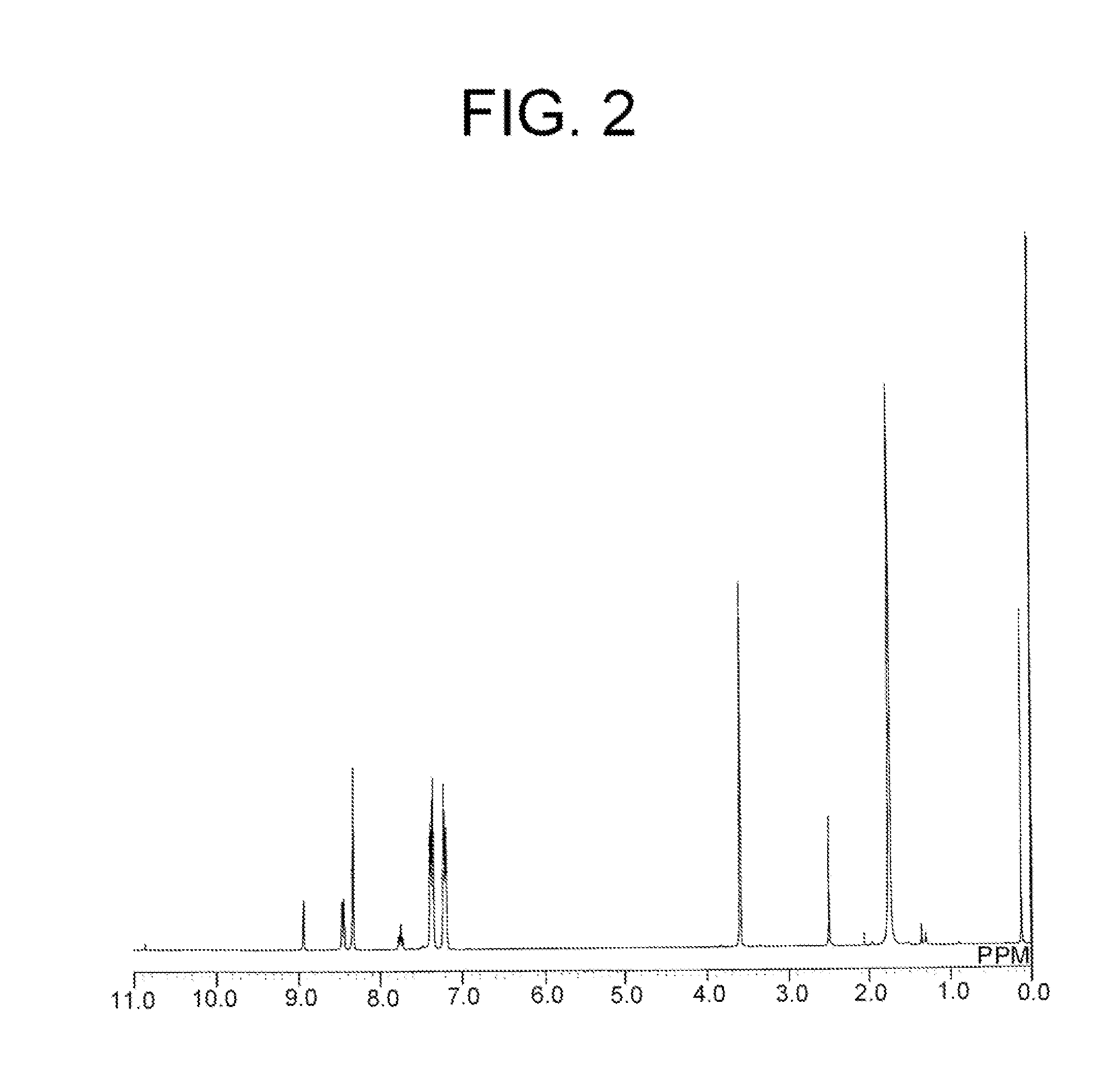Photoreceptor for electrophotography, process for producing the same, and electrophotographic apparatus
a technology of electrophotography and photoreceptor, applied in the direction of electrographic process, instrument, corona discharge, etc., to achieve the effect of satisfactory images, enhanced cleaning properties, and low friction coefficien
- Summary
- Abstract
- Description
- Claims
- Application Information
AI Technical Summary
Benefits of technology
Problems solved by technology
Method used
Image
Examples
production example 1
Method for Producing Copolymerized Polyallylate Resin (III-1)
[0112]In a 2-liter four-necked flat bottom flask, 540 mL of ion-exchanged water, 12.4 g of NaOH, 0.459 g of p-tert-butylphenol, 30.257 g of bisphenol A, 3.988 g of a compound of molecular formula (2)-3 (trade name: “SILAPLANE FM-4425” manufactured by Chisso Corp.), and 0.272 g of tetrabutylammonium bromide were introduced. Subsequently, 12.268 g of terephthalic acid chloride and 14.994 g of isophthalic acid chloride were dissolved in 540 mL of methylene chloride to prepare a solution, and the solution was introduced into the flask for about 2 minutes. The resulting mixture was stirred for 1.5 hours, and thus a reaction was carried out. After completion of the reaction, 360 mL of methylene chloride was added thereto to dilute the reaction mixture. The aqueous phase was separated and was used to perform reprecipitation in methanol in a four-fold volume. The reprecipitation product was dried at 60° C. for 2 hours, and then th...
production example 2
Method for Producing Copolymerized Polyallylate Resin (III-2)
[0114]Synthesis of the resin was carried out in the same manner as in Production Example 1, except that the amount of bisphenol A used in Production Example 1 was changed to 30.303 g, and the amount of the compound of molecular formula (2)-3 was changed to 1.994 g. The copolymerization ratio of the copolymerized polyallylate resin (III-2) thus obtained is presented in Tables 2 and 3.
production example 3
Method for Producing Copolymerized Polyallylate Resin (III-3)
[0115]Synthesis of the resin was carried out in the same manner as in Production Example 1, except that the amount of bisphenol A used in Production Example 1 was changed to 30.326 g, and the amount of the compound of molecular formula (2)-3 was changed to 0.997 g. The copolymerization ratio of the copolymerized polyallylate resin (III-3) thus obtained is presented in Tables 2 and 3.
PUM
| Property | Measurement | Unit |
|---|---|---|
| thickness | aaaaa | aaaaa |
| thickness | aaaaa | aaaaa |
| thickness | aaaaa | aaaaa |
Abstract
Description
Claims
Application Information
 Login to view more
Login to view more - R&D Engineer
- R&D Manager
- IP Professional
- Industry Leading Data Capabilities
- Powerful AI technology
- Patent DNA Extraction
Browse by: Latest US Patents, China's latest patents, Technical Efficacy Thesaurus, Application Domain, Technology Topic.
© 2024 PatSnap. All rights reserved.Legal|Privacy policy|Modern Slavery Act Transparency Statement|Sitemap



